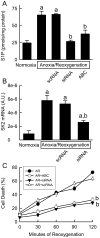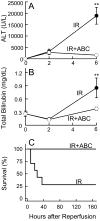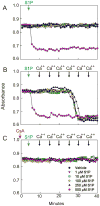Sphingosine kinase-2 inhibition improves mitochondrial function and survival after hepatic ischemia-reperfusion
- PMID: 21756852
- PMCID: PMC3220779
- DOI: 10.1016/j.jhep.2011.05.025
Sphingosine kinase-2 inhibition improves mitochondrial function and survival after hepatic ischemia-reperfusion
Abstract
Background & aims: The mitochondrial permeability transition (MPT) and inflammation play important roles in liver injury caused by ischemia-reperfusion (IR). This study investigated the roles of sphingosine kinase-2 (SK2) in mitochondrial dysfunction and inflammation after hepatic IR.
Methods: Mice were gavaged with vehicle or ABC294640 (50 mg/kg), a selective inhibitor of SK2, 1 h before surgery and subjected to 1 h-warm ischemia to ~70% of the liver followed by reperfusion.
Results: Following IR, hepatic SK2 mRNA and sphingosine-1-phosphate (S1P) levels increased ~25- and 3-fold, respectively. SK2 inhibition blunted S1P production and liver injury by 54-91%, and increased mouse survival from 28% to 100%. At 2 h after reperfusion, mitochondrial depolarization was observed in 74% of viable hepatocytes, and mitochondrial voids excluding calcein disappeared, indicating MPT onset in vivo. SK2 inhibition decreased mitochondrial depolarization and prevented MPT onset. Inducible nitric oxide synthase, phosphorylated NFκB-p65, TNFα mRNA, and neutrophil infiltration, all increased markedly after hepatic IR, and these increases were blunted by SK2 inhibition. In cultured hepatocytes, anoxia/re-oxygenation resulted in increases of SK2 mRNA, S1P levels, and cell death. SK2 siRNA and ABC294640 each substantially decreased S1P production and cell death in cultured hepatocytes.
Conclusions: SK2 plays an important role in mitochondrial dysfunction, inflammation responses, hepatocyte death, and survival after hepatic IR and represents a new target for the treatment of IR injury.
Copyright © 2011 European Association for the Study of the Liver. Published by Elsevier B.V. All rights reserved.
Figures









Similar articles
-
Inhibition of sphingosine kinase-2 suppresses inflammation and attenuates graft injury after liver transplantation in rats.PLoS One. 2012;7(7):e41834. doi: 10.1371/journal.pone.0041834. Epub 2012 Jul 25. PLoS One. 2012. PMID: 22848628 Free PMC article.
-
Activation of the oxygen-sensing signal cascade prevents mitochondrial injury after mouse liver ischemia-reperfusion.Am J Physiol Gastrointest Liver Physiol. 2008 Oct;295(4):G823-32. doi: 10.1152/ajpgi.90287.2008. Epub 2008 Sep 4. Am J Physiol Gastrointest Liver Physiol. 2008. PMID: 18772364 Free PMC article.
-
In vitro and in vivo roles of sphingosine kinase 2 during dengue virus infection.J Gen Virol. 2019 Apr;100(4):629-641. doi: 10.1099/jgv.0.001245. Epub 2019 Mar 14. J Gen Virol. 2019. PMID: 30869582
-
Sphingosine kinase and sphingosine 1-phosphate in the heart: a decade of progress.Biochim Biophys Acta. 2013 Jan;1831(1):203-12. doi: 10.1016/j.bbalip.2012.06.006. Epub 2012 Jun 23. Biochim Biophys Acta. 2013. PMID: 22735359 Free PMC article. Review.
-
Potential sphingosine-1-phosphate-related therapeutic targets in the treatment of cerebral ischemia reperfusion injury.Life Sci. 2020 May 15;249:117542. doi: 10.1016/j.lfs.2020.117542. Epub 2020 Mar 10. Life Sci. 2020. PMID: 32169519 Review.
Cited by
-
Acute ethanol causes hepatic mitochondrial depolarization in mice: role of ethanol metabolism.PLoS One. 2014 Mar 11;9(3):e91308. doi: 10.1371/journal.pone.0091308. eCollection 2014. PLoS One. 2014. PMID: 24618581 Free PMC article.
-
Ceramide kinase-mediated C1P metabolism attenuates acute liver injury by inhibiting the interaction between KEAP1 and NRF2.Exp Mol Med. 2024 Apr;56(4):946-958. doi: 10.1038/s12276-024-01203-4. Epub 2024 Apr 1. Exp Mol Med. 2024. PMID: 38556546 Free PMC article.
-
Role of inducible nitric oxide synthase in mitochondrial depolarization and graft injury after transplantation of fatty livers.Free Radic Biol Med. 2012 Jul 15;53(2):250-9. doi: 10.1016/j.freeradbiomed.2012.05.012. Epub 2012 May 15. Free Radic Biol Med. 2012. PMID: 22609250 Free PMC article.
-
Sphingosine 1-Phosphate Signaling Is Involved in Impaired Blood-Brain Barrier Function in Ischemia-Reperfusion Injury.Mol Neurobiol. 2020 Mar;57(3):1594-1606. doi: 10.1007/s12035-019-01844-x. Epub 2019 Dec 4. Mol Neurobiol. 2020. PMID: 31802363
-
Pre-conditions for eliminating mitochondrial dysfunction and maintaining liver function after hepatic ischaemia reperfusion.J Cell Mol Med. 2017 Sep;21(9):1719-1731. doi: 10.1111/jcmm.13129. Epub 2017 Mar 16. J Cell Mol Med. 2017. PMID: 28301072 Free PMC article. Review.
References
-
- Morales A, Lee H, Goni FM, Kolesnick R, Fernandez-Checa JC. Sphingolipids and cell death. Apoptosis. 2007 May;12(5):923–939. - PubMed
-
- Hait NC, Oskeritzian CA, Paugh SW, Milstien S, Spiegel S. Sphingosine kinases, sphingosine 1-phosphate, apoptosis and diseases. Biochim Biophys Acta. 2006 Dec;1758(12):2016–2026. - PubMed
-
- Olivera A, Spiegel S. Sphingosine-1-phosphate as second messenger in cell proliferation induced by PDGF and FCS mitogens. Nature. 1993 Oct 7;365(6446):557–560. - PubMed
-
- Lai WQ, Irwan AW, Goh HH, Howe HS, Yu DT, Valle-Onate R, et al. Anti-inflammatory effects of sphingosine kinase modulation in inflammatory arthritis. J Immunol. 2008 Dec 1;181(11):8010–8017. - PubMed
Publication types
MeSH terms
Substances
Grants and funding
LinkOut - more resources
Full Text Sources

